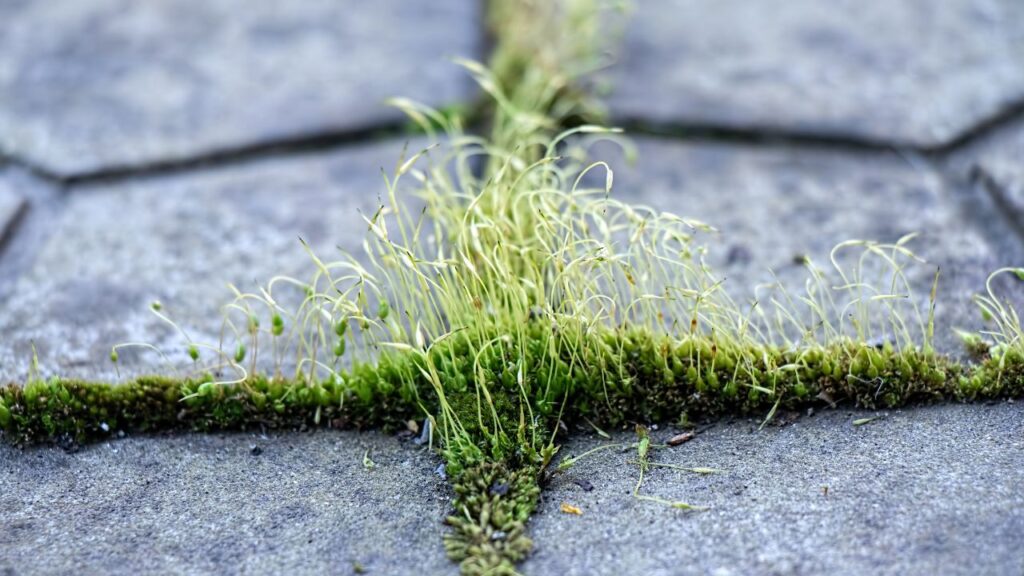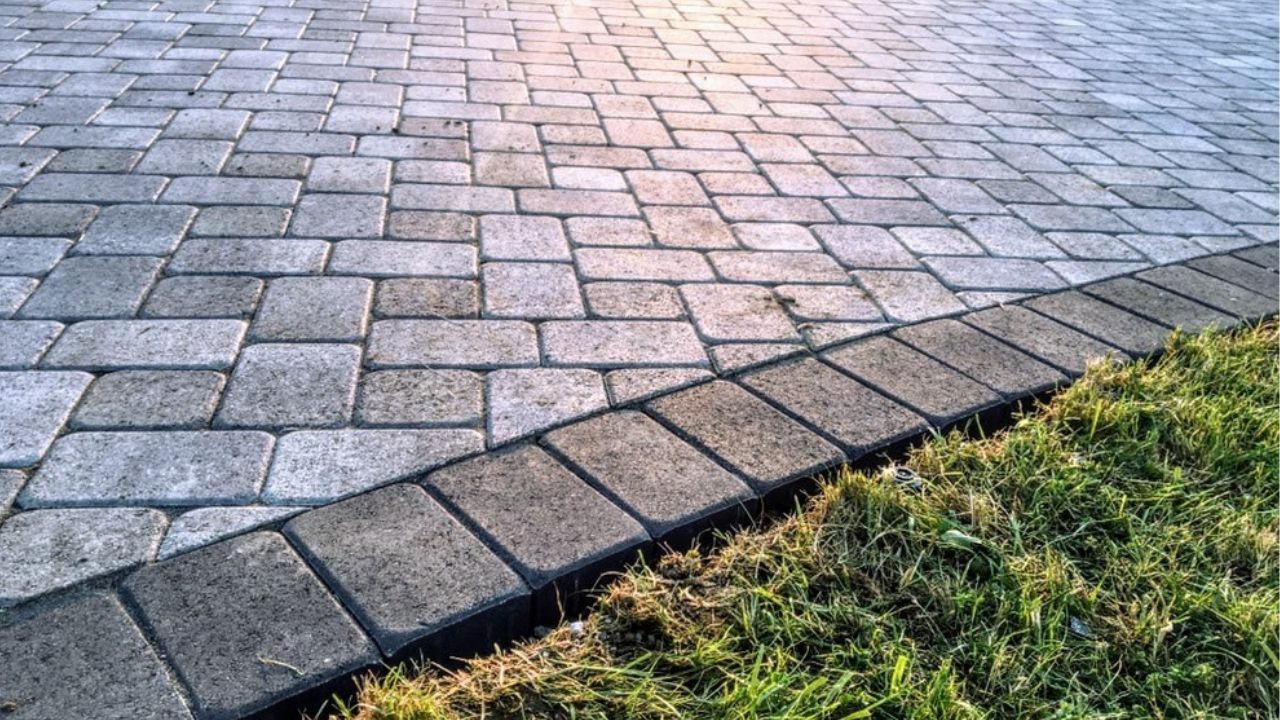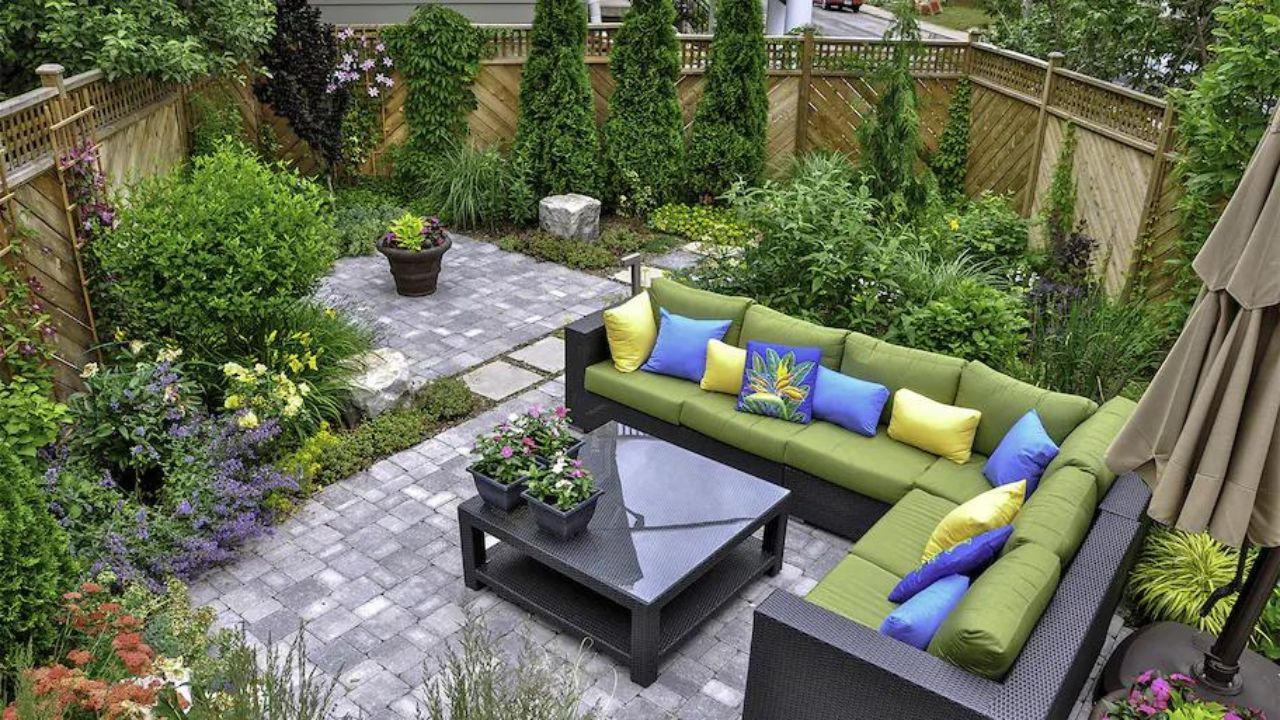Paver Replacement Contractor in Austin
If you’re in Austin and searching for a trusted Paver Replacement Contractor to transform your outdoor space, you’ve come to the right place. Our experienced team specializes in paver replacement, enhancing both the aesthetics and functionality of your property. Whether your pavers are showing signs of wear and tear, have become uneven over time, or you simply want to refresh your outdoor look, our skilled professionals in Austin are here to help.
We pride ourselves on delivering top-quality craftsmanship, using the finest materials to ensure long-lasting results.

With years of experience serving the Austin community, our Paver Replacement Contractor services are tailored to meet your unique needs and preferences.
Frequently Asked Questions
Paver replacement offers a fresh start for your outdoor space, often resulting in a more durable and aesthetically pleasing outcome compared to repairs. It allows for the correction of underlying issues and gives you the opportunity to update the design and materials for improved longevity.
The choice of paver material depends on factors like your aesthetic preferences, budget, and intended use of the paved area. Our experts can provide guidance and help you select the ideal material, whether it’s concrete, brick, natural stone, or another option.
Project timelines vary depending on the size, complexity, and weather conditions. However, a rough estimate for a standard paver replacement project in Austin might range from a few days to a couple of weeks. We provide detailed timelines during the planning phase.
Permit requirements can vary depending on your location and the scope of the project. We are well-versed in local regulations and can advise you on whether permits are needed. If required, we will assist in obtaining the necessary permits.
Proper drainage is critical for the longevity of your paver installation. Our team assesses the site, addresses drainage concerns, and ensures that the base is correctly graded to prevent water pooling or runoff issues.
Assessing the Need for Paver Replacement
Signs That Your Pavers Require Replacement
Recognizing the signs that your pavers require replacement is crucial for maintaining the functionality and appearance of your outdoor spaces. Here are some common signs that it might be time to consider paver replacement:
Cracks and Breaks
Visible cracks, fractures, or chips in your pavers are clear indicators that they have sustained damage and may need replacement. Cracked pavers can be both unattractive and hazardous.
Uneven Surfaces
If your pavers have become uneven, creating tripping hazards or an unstable walking surface, it’s a sign that they need attention. Uneven pavers are often caused by shifting ground or a poor initial installation.
Sinking Pavers
Pavers that have sunken or settled lower than the surrounding ones can create water pooling issues and an uneven appearance. This may be due to improper base preparation during installation or soil erosion over time.
Weed Growth
Gaps and crevices between pavers can become breeding grounds for weeds and vegetation. If you notice persistent weed growth, it’s a sign that the pavers may need resetting or replacement to eliminate the problem.

Loose or Shifting Pavers
Pavers that have become loose or have shifted from their original positions can create an unstable and unsafe surface. This is often caused by inadequate base compaction or poor installation techniques.
Stains and Stubborn Discoloration
Stubborn stains, mold, mildew, or other discoloration that cannot be removed with regular cleaning may indicate that the pavers’ surface has deteriorated to the point where replacement is necessary.

Pooling Water
Pavers that do not drain properly can result in standing water after rain or irrigation. Poor drainage can damage pavers over time and should be addressed through replacement or repairs.
Finding the Right Paver Replacement Contractor
Tips for Selecting a Reputable Contractor
Selecting a reputable contractor is crucial to ensuring a successful and stress-free home improvement project. Here are some essential tips to help you choose the right contractor for your needs:
Ask for Recommendations
Seek recommendations from friends, family, neighbors, or colleagues who have had similar work done. Personal referrals are often a reliable way to find reputable contractors.
Check for Licensing and Insurance
Verify that the contractor is licensed to work in your area and that they have the necessary insurance coverage. This protects you from liability in case of accidents or property damage during the project.
Verify Credentials
Look for affiliations with professional associations and organizations, such as the Better Business Bureau (BBB) or local builder’s associations. Membership can indicate a commitment to quality and ethics.
Read Reviews and Testimonials
Search online for reviews and testimonials from previous clients. Websites like Yelp, Google, and Angie’s List can provide valuable insights into a contractor’s reputation and work quality.
Request References
Ask the contractor for a list of references you can contact directly. Speaking with past clients can give you a better understanding of the contractor’s performance and reliability.
Obtain quotes from at least three different contractors for your project. This allows you to compare pricing, services, and the overall approach of each contractor.
Communication and Transparency
Pay attention to how the contractor communicates with you. They should be responsive, clear in their explanations, and willing to address your questions and concerns.
Budgeting for Paver Replacement
Understanding the Cost of Paver Replacement

Comprehending the intricacies of the cost associated with paver replacement stands as a pivotal prerequisite when undertaking any outdoor renovation endeavor, serving as the linchpin for meticulous project budget formulation.
This undertaking is a multifaceted one, and it demands a thorough examination of the various elements that collectively shape the financial aspects:
Paver Material
The type of paver material you choose has a significant impact on the cost. Common options include concrete, brick, natural stone, and interlocking pavers. Natural stone pavers tend to be more expensive than concrete, for example.
Paver Size and Style
The size, shape, and design of the pavers you select can affect the cost. Intricate patterns or custom designs may require more time and labor, increasing the overall expense.
Project Size
The total square footage of the area you want to replace with pavers directly affects the cost. Larger projects require more materials and labor, resulting in a higher price tag.
Labor Costs
Labor costs vary depending on your location and the complexity of the project. Skilled labor is essential for proper paver installation, and experienced contractors may charge more for their expertise.


Site Preparation
If your existing pavers are in poor condition or the base needs adjustments, site preparation can add to the cost. This includes removing old pavers, addressing drainage issues, and properly compacting the base.
Geographic Location
Construction costs can vary by region, so your location plays a role in determining the final cost of your paver replacement project.
Additional Features
Consider any additional features you want, such as retaining walls, steps, or decorative borders. These can add to the overall cost of the project.
Choosing the Ideal Paver Material
Selecting the Right Material for Your Project
Selecting the right material for your paver replacement project is a crucial decision, as it not only affects the aesthetics but also the durability and maintenance requirements of your outdoor space. Here are some popular paver materials to consider, along with factors to help you choose the one that best suits your project:
Concrete Pavers
- Affordability: Concrete pavers are generally more budget-friendly compared to natural stone or brick.
- Versatility: They come in a wide range of shapes, sizes, and colors, allowing for various design possibilities.
- Durability: Concrete pavers are durable and can withstand the elements and heavy foot traffic.
- Low Maintenance: They are relatively low-maintenance and easy to clean.
- Availability: Concrete pavers are readily available and can be a cost-effective choice.
Brick Pavers
- Classic Look: Brick pavers have a timeless and classic appearance, making them ideal for traditional and historic properties.
- Durability: When installed correctly, brick pavers can last for decades and develop a charming patina over time.
- Variety: They come in various colors and shapes, allowing for creative patterns and designs.
- Maintenance: Brick pavers may require occasional resealing to maintain their appearance and prevent weed growth between joints.

Natural Stone Pavers
- Elegant Aesthetics: Natural stone pavers, such as limestone, granite, or bluestone, offer a luxurious and elegant look.
- Durability: They are incredibly durable and can withstand harsh weather conditions.
- Unique Patterns: Each stone is unique, creating a one-of-a-kind, natural look.
- Cooler Surface: Natural stone tends to stay cooler in hot weather, making it comfortable for barefoot walking.
- Higher Cost: Natural stone pavers are generally more expensive than concrete or brick options.

Interlocking Concrete Pavers
- Ease of Installation: Interlocking pavers are designed to fit together seamlessly, making installation quicker and more straightforward.
- Strength: They offer excellent load-bearing capacity, making them suitable for driveways.
- Design Variety: Like regular concrete pavers, interlocking pavers come in various colors and patterns.
- Resistant to Cracking: Interlocking design minimizes the risk of individual pavers cracking or shifting.
Porcelain Pavers
- Contemporary Aesthetics: Porcelain pavers provide a modern, sleek appearance and come in various finishes, including wood and stone looks.
- Low Maintenance: They are resistant to stains, fading, and require minimal upkeep.
- Resistance to Moisture: Porcelain is non-porous, making it resistant to moisture and frost, ideal for areas with high humidity or freezing temperatures.
- Slip-Resistance: Many porcelain pavers have textured surfaces for improved slip resistance.
When selecting the right material, consider factors such as your budget, desired aesthetics, maintenance preferences, climate conditions, and intended use of the paved area. Additionally, consulting with a reputable paver replacement contractor can help you make an informed decision based on your specific project requirements and goals.
The Paver Replacement Process
A Step-by-Step Guide to Replacing Your Pavers
Replacing pavers can transform the look and functionality of your outdoor space. Here’s a step-by-step guide to help you navigate the process effectively:
Assessment and Planning
- Assess the Condition: Begin by evaluating the existing pavers. Identify damaged, uneven, or sunken areas that require replacement.
- Set Your Goals: Determine your goals for the project. Are you looking to refresh the appearance, address safety concerns, or improve drainage?
- Measure and Plan: Measure the area to calculate the number of replacement pavers needed. Consider any design changes or additions, such as borders or patterns.
Gather Materials and Tools
- Select Replacement Pavers: Choose pavers that match the style and size of your existing ones. Consider materials, colors, and finishes that complement your outdoor space.
- Prepare Necessary Tools: Gather tools such as shovels, wheelbarrows, a compactor, a level, a rubber mallet, safety gear, and any materials for site preparation and base compaction.
Site Preparation
- Clear the Area: Remove furniture, plants, and any obstacles from the project area.
- Demolition: If needed, carefully remove old or damaged pavers using a pry bar and a mallet. Dispose of them properly.
- Address Drainage: Address any drainage issues, ensuring that the base is correctly sloped away from structures and that proper drainage solutions are in place.
Base Preparation
- Excavation: Dig out the area to the required depth for your base materials. This depth may vary depending on the type of pavers and the base you’re using.
- Install Base Materials: Lay and compact the base materials, such as gravel or crushed stone, to create a stable and level foundation for the new pavers. Ensure proper compaction to prevent settling.
Setting the Pavers
- Begin at the Edges: Start placing replacement pavers along the edges or borders. Use a level to ensure they are even and at the correct height.
- Pattern and Design: Follow your planned pattern or design for the pavers. Use string lines and guides to maintain alignment.
- Interlock or Stack: For interlocking pavers, ensure they fit snugly together. For other types, leave a small gap (usually 1/8 inch) between them for joint sand.
- Tap into Place: Gently tap each paver into position with a rubber mallet to ensure they are level and firmly set.
Joint Sand and Finishing
- Joint Sand: Spread joint sand over the pavers and sweep it into the gaps between them. Compact the sand with a plate compactor to secure the pavers in place.
- Clean and Seal: Clean the surface to remove excess sand and any debris. If desired, apply a sealant to protect and enhance the appearance of the pavers.
Final Inspection
- Inspect the Project: Carefully inspect the entire area to ensure all pavers are level, stable, and properly aligned. Make any necessary adjustments.
- Clean Up: Remove any remaining debris, tools, and equipment from the site.
If you’re uncertain about any step or need assistance, we are here to assist you for paver replacement with experience in these projects. We can ensure that the job is done correctly, efficiently, and to your satisfaction.
Preparation Steps Before Replacement
Getting Your Property Ready for the Project
Preparing your property properly before starting a paver replacement project is essential for a smooth and successful outcome. Here’s a step-by-step guide on how to get your property ready:
Clear the Project Area
Remove Obstacles: Clear the area of any obstacles, including outdoor furniture, plants, garden decorations, or any other items that may obstruct the work site.
Plan for Site Accessibility
Clear Pathways: Ensure that there is a clear and accessible pathway for contractors and their equipment to reach the project area. Remove any barriers like gates, fences, or overgrown vegetation.
Protect Landscaping
Protect Plants: If you have valuable or delicate landscaping near the project area, consider protecting it with temporary fencing or covering. This prevents accidental damage during the project.
Address Drainage Issues
Inspect Drainage: Check for any drainage issues in the project area. Ensure that water flows away from structures and that proper drainage solutions are in place to prevent standing water.
Provide Access to Utilities
Access to Water and Electricity: If your project requires access to water or electricity, ensure that outdoor faucets and electrical outlets are accessible for the contractors’ use.
Secure Permits and Approvals
Check Local Regulations: Determine whether your project requires permits or approvals from local authorities. If so, obtain these before work begins to avoid potential legal issues.
Communicate with Contractors
Contractor Coordination: Discuss the project’s logistics and any specific site preparation requirements with your chosen contractor. They can provide guidance on what needs to be done before they start work.
By carefully preparing your property before the project begins, you can help ensure that the paver replacement process goes smoothly, minimizes potential issues, and provides a safe and efficient work environment for contractors. Effective communication with your contractor is key, as they can provide specific guidance based on the unique requirements of your project.
Common Paver Replacement Pitfalls
Mistakes to Avoid During the Replacement
Paver replacement can significantly enhance your outdoor space, but it’s important to avoid common mistakes that could lead to project delays or subpar results. Here are some mistakes to steer clear of during the paver replacement process:
Inadequate Planning
- Mistake: Rushing into the project without a well-thought-out plan, including design, material selection, and budget.
- Avoidance: Take the time to thoroughly plan every aspect of your paver replacement, from choosing materials to establishing a realistic timeline and budget.
Neglecting Proper Site Preparation
- Mistake: Skipping essential site preparation steps, such as excavation, base compaction, and addressing drainage issues.
- Avoidance: Ensure that the project area is properly prepared, and the base is adequately compacted to prevent settling or uneven pavers.
Failing to Hire a Qualified Contractor
- Mistake: Hiring an inexperienced or unlicensed contractor without checking credentials.
- Avoidance: Research and hire a reputable paver replacement contractor with a track record of successful projects and the necessary licenses and insurance.
Not Obtaining Permits
- Mistake: Neglecting to obtain required permits or approvals for the project.
- Avoidance: Check local regulations and secure any necessary permits before starting work to avoid legal issues or project delays.

Choosing the Wrong Paver Material
- Mistake: Selecting paver materials that are not suitable for the intended use or climate conditions.
- Avoidance: Consult with your contractor to choose the right paver material based on your specific needs, style preferences, and local climate.
Poor Drainage Planning
- Mistake: Ignoring drainage issues, leading to water pooling or erosion around the pavers.
- Avoidance: Address drainage concerns during the planning phase and implement proper grading and drainage solutions as needed.
Lack of Maintenance Planning
- Mistake: Underestimating the importance of routine maintenance, leading to premature paver deterioration.
- Avoidance: Develop a maintenance plan that includes cleaning, sealing, and regular inspections to extend the life and appearance of your pavers.
Poor Communication with Contractors
Mistake: Failing to maintain clear and open communication with your contractor throughout the project.
Avoidance: Establish a line of communication, address concerns promptly, and stay involved in the decision-making process to ensure your vision is realized.

By avoiding these common mistakes and working closely with your contractor, you can achieve a successful paver replacement project that enhances your outdoor space and adds long-lasting value to your property.
Benefits of Professional Contractor
Why You Should Hire a Professional

When it comes to upgrading your outdoor space with a paver replacement project, the choice to hire a professional contractor can make all the difference. While DIY may be an option, here are some compelling reasons why investing in professional expertise is a wise decision.
Expertise and Experience
Professional contractors come armed with a wealth of knowledge and hands-on experience. They understand the intricacies of various paver materials, installation techniques, and can offer expert advice on design and layout.
Quality Materials and Tools
Professionals have access to top-notch materials and the right tools for the job. This ensures that your project uses durable and attractive paver materials and is executed efficiently.
Time and Cost Efficiency
Hiring professionals can often save you time and money in the long run. They work efficiently, reducing project timelines, minimizing disruptions, and reducing material waste.
Proper Planning and Design
Professionals can help you plan and design your project, taking your aesthetic preferences and functional needs into account. They create layouts that enhance your outdoor space’s beauty and usability.
Warranty and Guarantee
Reputable contractors typically offer workmanship warranties, providing peace of mind in case issues arise after the project is completed.
Compliance and Safety
Professionals are well-versed in local building codes and regulations, ensuring that your project complies with all legal requirements. They prioritize safety throughout the project, reducing risks and liability.
In short, hiring a professional paver replacement contractor guarantees a hassle-free and successful project from start to finish. Their expertise, quality workmanship, and commitment to safety add significant value to your property, making it a worthwhile investment in enhancing your outdoor living space.
Conclusion
In conclusion, when it comes to your outdoor space in Austin, choosing a professional paver replacement contractor, backed by a team of Pavers Experts, is a decision that can make a world of difference. The right contractor can turn your vision into reality, transforming your outdoor area into a beautiful and functional oasis. With our expertise, experience, and commitment to quality, they bring a level of craftsmanship that ensures a successful and satisfying project.
Whether you’re looking to revamp a tired patio, upgrade your driveway, or create inviting walkways, the skills and resources of a trusted Austin paver replacement contractor, led by Pavers Experts, are indispensable. Our attention to detail, adherence to safety and regulations, and dedication to open communication are all part of the package.
Let Us Help Our Paver Contractors
Check out the video
Service Locations
SERVICE AREA
Serving Our Community
TESTIMONIALS
What Our Customers Say















